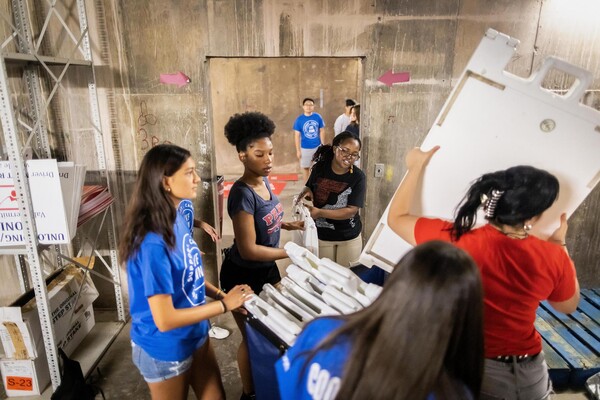West Philly by the numbers on the Web
A new, free service is helping to build a better community in West Philadelphia.
InfoResources West Philadelphia (InfoR)—a database that facilitates information sharing, economic development and neighborhood initiatives within the community—can be accessed anytime via the Internet.
Sidney Wong, assistant professor in City and Regional Planning, is heading this push to ease the public’s access to data as the director of InfoR.
He said that small-scale nonprofits, such as faith-based organizations and other community groups, sometimes do not have the capacity or resources to access the kinds of data required for program development and grant writing. “We are targeting those groups that need us,” he said.
Visitors to the site can now find a range of information, from real estate to public safety to neighborhood resources, all in one spot.
“A high school teacher may talk about the history of Philadelphia or maybe a social concern in West Philadelphia and instead of going to the library and looking at Census maps they can come here and grab the data,” said Wong.
The information, which is culled from sources like the Census Bureau, municipal records and corporate or civic associations, is arranged by geography. Users can compare their neighborhoods with others by census tract, school district and zip code. For example, residents of Cobbs Creek can compare health statistics particular to their neighborhood with the rest of Philadelphia or with another West Philadelphia enclave, say, Cedar Park.
One piece of data can also be correlated to another. A researcher can link health, education and housing factors in a specific school cluster, thereby drawing a relationship between school performance and living situations.
Information on the site can also help the University develop plans for comprehensive community renewal. Wong said by working with the Center for Community Partnerships the project has already generated maps of the different neighborhoods for University administrators.
But for the most part InfoR’s users remain anonymous. To ensure the privacy of its users, the site does not require a login or registration. Wong said this is in keeping with the principle of “data democracy.” So far, the site has welcomed approximately 5,000 visitors.
While some of the site’s information comes from records that are updated annually, old data can still be accessed.
“I have a habit,” said Wong. “I don’t want to throw away old data because, from a research perspective, [having] longitudinal or time-series data is useful.”
Wong also does not want to restrict data sources to official records only. Local high school students can also contribute information about the community.
“We want to develop some kind of relationship with the community users so that they can bring their stuff here. For example, if a high school student team looks at the blighting condition or housing condition of certain blocks, there is no reason it cannot appear here.”
Wong also wants to archive work conducted by Penn researchers. InfoR can act as a sort of online storage, he said.
Visit the site at westphillydata.library.upenn.edu.








